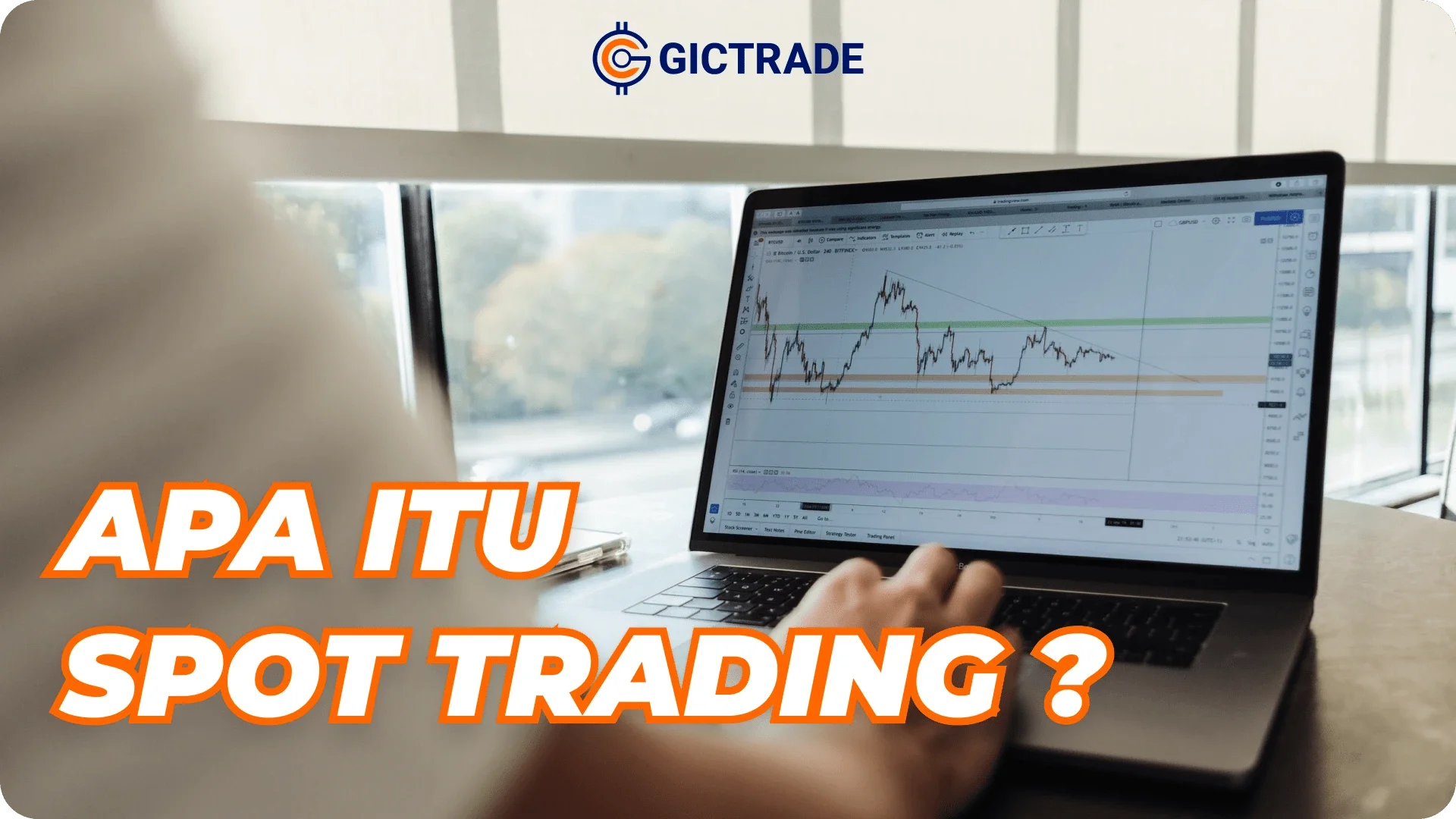What is Spot Trading?
Spot trading is when a trader buys or sells a financial instrument, commodity, or foreign currency on a specific date (the spot date). Spot trading is also known as spot transactions. Spot contracts often involve physical delivery of the currency or commodity. Spot trading takes into account the time value of the price paid for the underlying asset, which is dependent on the maturity date and interest rates. In spot foreign exchange transactions, the rate at which the change occurs is called the spot rate. You can compare futures or forward trading with spot trading.
What is Spot Market in Crypto?
Spot Market in cryptocurrency is a platform, mainly available on exchanges, where you can trade in real time with other users. Transactions are completed efficiently and orders are filled in a timely manner. As a buyer, you can trade multiple currencies in specific pairs (such as BTC, ETH, BNB, or even FIAT ). In addition, this spot market has three main components: sellers, buyers, and order books. Spot markets exist in various forms, such as over-the-counter (OTC) trading and third-party exchanges. Primarily. over-the-counter trading involves only sellers and buyers without the intervention of a broker. In contrast, third-party exchanges act as intermediaries or middlemen between sellers and buyers.Differences between Spot Trading and Other Types of Trading
The difference from spot trading is the type of trading that you can see below:Futures Trading Example
An example of futures trading is if someone wants to buy a September crude oil futures contract. So they enter into a futures contract that they will buy 200 barrels of oil at an agreed price at the end of September whatever the market price is at that time. The seller also agrees to sell those 200 barrels of oil at the agreed price. Now both the buyer and the seller are obligated to buy or sell these 200 barrels of oil unless they trade with another buyer or seller. Traders can also buy stock futures, index funds, foreign exchange, etc.Options Trading Example
For example, let us assume the strike price of a call option on SBI stock is Rs. 200 which has an expiry of three months. The current stock price is Rs. 165. As per the option contract, you can buy SBI stock anytime within three months at a strike price of Rs. 200. If at any point of time during the expiry period if the strike price rises above Rs. 200 you can exercise your call option and buy the stock at Rs. 200 only.
This way you can make a profit as the call option is in-the-money. Similarly, the value of a call option increases when the current price is closer to the strike price. For example, the stock mentioned above which is priced at Rs. 165. The value of an option with a strike price of Rs. 185 will be higher than an option with a strike price of Rs. 200. This is because the probability of the stock price being Rs. 185 is higher than Rs. 200.
Margin Trading Example
Let’s say an investor wants to buy 200 shares of a company that is currently trading at $30 per share, but he only has $3,000 in his brokerage account. He decides to use that cash to pay for half (100 shares) and he buys the other 100 shares on margin by borrowing $3,000 from his brokerage firm, for a total initial investment of $6,000.
Now let’s say the stock price rises 33% to $40. That means his initial investment of $6,000 grows to about $8,000. Although he has to pay back the money he borrowed, he gets to keep the profit he made. In this case, after he pays back the $3,000, he has $5,000 — a profit of $2,000. If he had just invested the $3,000 in cash, his profit would have been about $1,000.
By trading on margin, the investor doubles his profits with the same amount of cash. However, not every investment is a winner. In the losing scenario, the stock takes a hit and the price drops from $30 to $20. The value of his investment drops from $6,000 to $4,000, and after he pays off his loan, he is left with $1,000 — a loss of $2,000. If he had invested with just his cash, his loss would have been half that, at $1,000.
What if the stock price goes up further to, say, $10 per share? The total investment is now worth only $2,000, but the investor needs $3,000 to pay off the loan. Even after he sells the remaining shares to pay off the loan, he still owes an additional $1,000. That’s a total loss of $4,000 (his initial $3,000 investment plus an additional $1,000 to meet the loan requirements). You read that right. When using leverage, the potential loss is greater than your initial investment.The difference between Futures Contract vs Spot Trading is
Futures are derivative contracts to buy or sell an asset in the future at an agreed-upon price. The asset might be soybeans, coffee, oil, individual stocks, exchange-traded funds, cryptocurrencies, or a variety of others. Futures contracts can be used by many types of financial players, including investors and speculators, as well as companies that actually want to take physical delivery of the commodity or supply it.
Oil, for example, is a commodity that can be traded in futures contracts. The main difference between spot prices and futures prices is that spot prices are for immediate purchase and sale, while futures contracts defer payment and delivery to a predetermined date in the future. Spot prices are usually below futures prices. This situation is known as contango. Contango is quite common for non-perishable goods with significant storage costs. On the other hand, there is backwardation , which is a situation where the spot price exceeds the futures price. In both situations, the futures price is expected to eventually converge to the current market price.
Difference Between Options vs Spot Trading
Options trading can seem more complicated than it is. If you’re looking for a simple options trading definition, it goes like this: Options trading is trading an instrument that gives you the right to buy or sell a specific security on a specific date at a specific price. An option is a contract tied to an underlying asset, such as a stock or other security. Options contracts are good for a specific period of time, which can be as short as a day or as long as several years.
When you buy an option, you have the right to trade the underlying asset but you’re not obligated to do so. If you decide to do so, it’s called exercising the option. If you’re a DIY investor diving into options with a self-directed account , you’re in complete control of your trading decisions and transactions. But that doesn’t mean you’re on your own. Many communities bring together traders to discuss things like the current market outlook and options trading strategies.
Difference between Spot Trading vs Margin Trading
Margin trading, or “buying on margin,” means borrowing money from your brokerage firm, and using that money to buy stocks. Simply put, you take out a loan, buy stocks with the borrowed money, and then pay the loan back — usually with interest — later. Buying on margin has some serious appeal compared to using cash, but it’s important to understand that with the potential for higher returns, there are also greater risks. Margin trading is a form of leverage, which investors use to magnify their profits. However, if an investment doesn’t go as planned, that can mean bigger losses.Benefits of Spot Trading
Spot trading offers a number of advantages to both sellers and buyers. Some of these may involve:- Spot trading gives you the facility of negotiation. Both buyers and sellers can negotiate the price to their advantage. This negotiation process offers fair and equal profits which makes it one of the most profitable markets in cryptocurrency trading.
- The prospect of making relatively higher profits in spot trading. It allows traders to buy and sell coins simultaneously.
- The spot market opens the door to day trading where you can quickly buy and sell your crypto tokens to make small profits.
- As one of the profitable trading markets, spot trading facilitates the purchase of tokens at a low price to sell them at a higher price, ensuring a balanced profit-making process.
- Since spot trading involves on-the-spot transactions, it ensures transparency.
- In the spot market, there are no barriers to entry. Traders with small investments can also take advantage of high price fluctuations.
- In the spot market, crypto tokens can be easily traded against each other and FIAT, allowing traders to make instant transactions.
 Last:
Last: 







